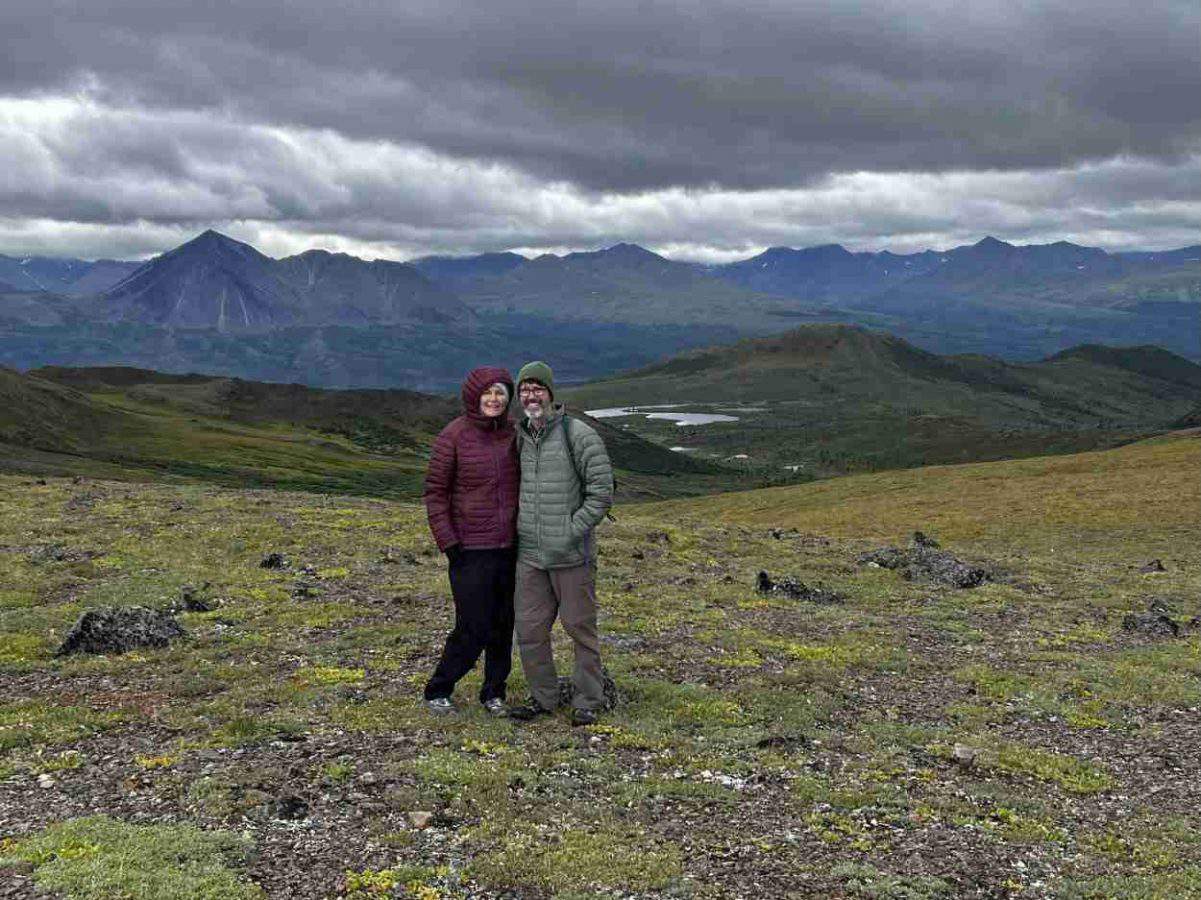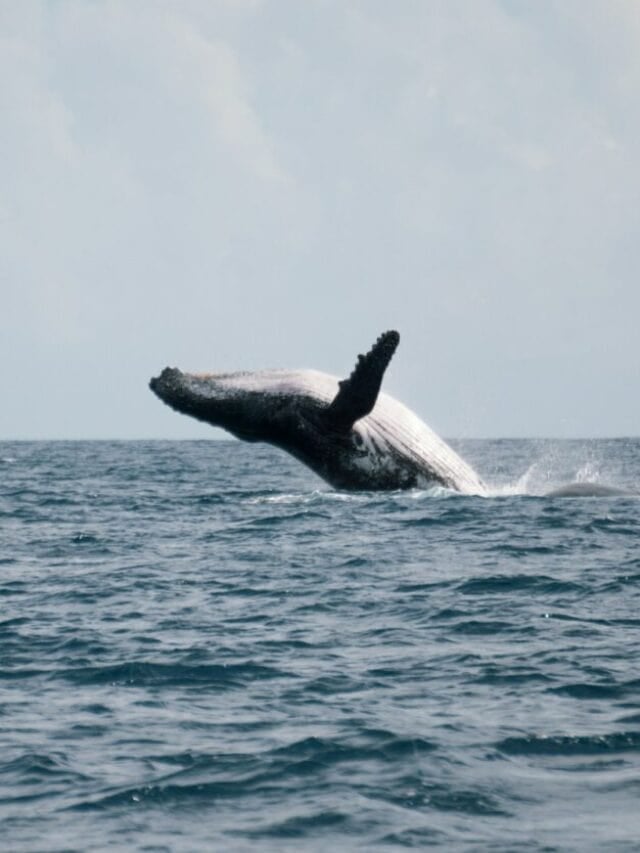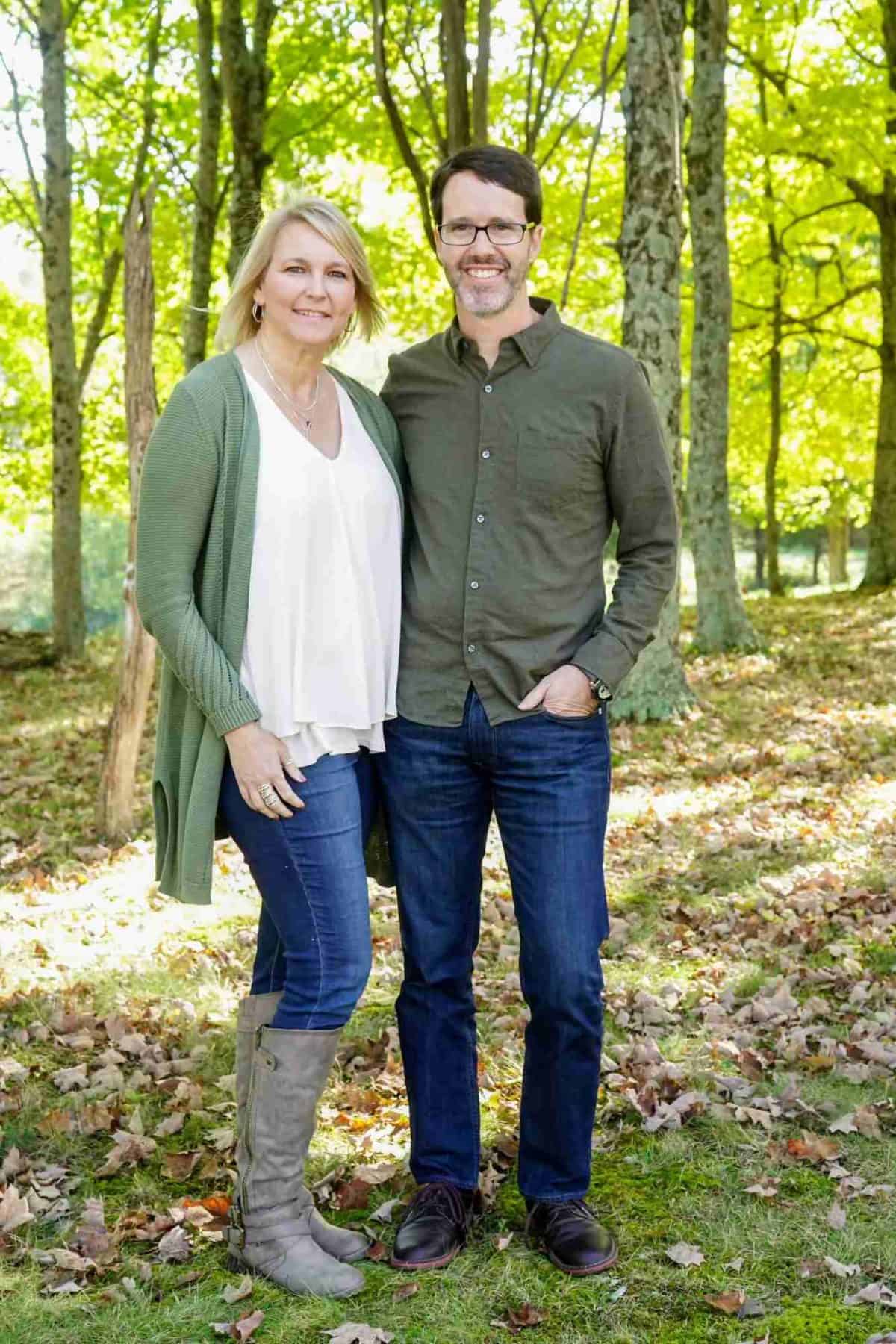Alaska offers surreal scenery with snow-capped mountains, magical glaciers, alpine meadows, and lush forests teeming with wildlife. Many visitors focus on the last frontier’s fauna, ignoring its flora. Although the wildlife is spectacular, plant life is the heart of the untamed wilderness. We outline Alaska plants for you to admire and a few to fear on your dream vacation.
Disclosure: This post may contain affiliate links. If you make a purchase through one of these links, I may earn a small commission at no additional cost to you. Thanks for keeping Miles with McConkey going!
National Forests in Alaska
Alaska is home to two national forests. Due to their extensive size, it is easy to find these wooded areas.
Tongass National Forest

America’s largest national forest, the Tongass National Forest, surrounds the famous Inside Passage, covering most of southeast Alaska. It spans nearly 17 million acres and is affectionately called the “crown jewel” by the United States Forest Service.
The Tongass National Forest is the world’s largest contiguous temperate rainforest. Forty percent of the forest consists of rock, ice, water, and muskeg. For those unfamiliar with muskeg, it is a bog of water and partly dead vegetation under a layer of moss. Some describe it as a soggy blanket.
The forest contains primarily giant, old-growth spruce and hemlock trees. Species include:
- Sitka spruce
- Western hemlock
- Mountain hemlock
- Shore pine
- Yellow cedar
- Western redcedar
Chugach National Forest
America’s second largest national forest, the Chugach National Forest, is nearly 7 million acres. It stretches across the heart of southcentral Alaska. Although less than half the size of the Tongass, the forest is bigger than New Hampshire.
There are three dominant tree species in the Chugach National Forest:
- Sitka spruce
- Western hemlock
- Mountain hemlock
The Chugach National Forest contains nearly every Alaskan geographic zone, from rainforests to coastal inlets, boreal woods, and wetlands. Although one-third of the Chugach comprises rocks and moving ice, it boasts over 500 miles of maintained trails.
Alaska Plants to Admire
You may picture a frozen land covered in ice, but Alaska’s ecosystems range from tundra to thick forests and mountains to grasslands. The last frontier houses hardy and beautiful plants vital to supporting a biosphere full of fantastic wildlife.
Fireweed

You can find the tall, showy wildflower in much of Alaska. It grows anywhere from sea level to the subalpine zone. You will see the flowers in open meadows and along streams, forests, and roads. The bright pink or purple flowers stand out on the horizon, sometimes carpeting entire fields.
Some believe fireweed gets its name from its bold colors. The name is more about the plant’s ability to quickly colonize land burned and scarred by fire.
Fireweed stems are typically four to six feet but can grow to an impressive 9 feet. As fall arrives, fireweed turns to seed, appearing like fluffy cotton. Alaskans will tell you, “When fireweed turns to cotton, summer is soon forgotten.”
The edible flowers are in various Alaskan foods. It is mixed in salads and added to tea, jelly, and ice cream as a flavor enhancer.
Many believe the plant has healing properties. Uses include treating headaches, inflammation, fevers, wounds, stomach ulcers, the common cold, and enlarged prostate. To date, there is insufficient scientific evidence to support this belief.
Devil’s Club

Although you do not need to fear the devil’s club, the aptly named plant is deceptive in every way. With an intoxicating ginseng scent, broad green leaves, and bright red berries, the alluring devil’s club practically begs you to touch it. This move is ill-advised.
Every part of the plant, other than the roots and berries, is densely covered with fine prickly spines. The stinging hairs lie hidden on the underside of the leaves, delivering intense pain to unsuspecting souls upon touch.
Devil’s club is native to the Pacific Northwest and is also called Alaskan ginseng or devil’s walking stick. It grows three to eight feet tall in dense thickets in well-drained forests and damp areas in southeast and southcentral Alaska. Admire the plant’s beauty, but resist the temptation to touch.
For years, Native Americans have used devil’s club to treat severe conditions like rheumatoid arthritis, diabetes, and cancer. It is available over the counter to treat pain, inflammation, and infections and to boost our immune functions. There is insufficient research to date to evaluate its effectiveness.
Skunk Cabbage

One of the first plants to bloom in spring, skunk cabbage is a valuable early spring food source for black-tailed deer and bears. Deer feed on the leaves, while bears eat the roots.
Skunk cabbage thrives in the rainforest and along streams. Due to its fantastic ability to generate heat, skunk cabbage can crop up in frozen soil.
A fitting name, the plant’s flowers excrete a pungent odor that attracts flies and insects. The blooms are odd in appearance. A bright yellow leaf called a spadix partially shrouds a fleshy spike, a spathe, coated with tiny, stinky flowers.
Although rich in protein and nutrients, skunk cabbage houses calcium oxalate crystals, making it inedible to people. Other than bears and deer, most animals steer clear of skunk cabbage to avoid the burning sensation it causes when eaten. With tough mouths and a tolerant digestive system, deer feed on skunk cabbage and devil’s club.
Sitka Spruce
Alaska’s state tree, the Sitka spruce, is the largest spruce. Although not as tall as the coastal redwoods in Redwood National and State Parks, Sitka spruce can exceed 200 feet. The tree received its name from the southeast Alaska community, where it is widespread.
Sitka spruce bark is thin, flaking off in small, circular plates reminiscent of fish scales. Its leaves are sharp, rigid needles.
Due to its size and high-quality wood, Sitka spruce is Alaska’s dominant timber tree. Makers of musical instruments use Sitka spruce because it is highly resonant.
The wood is light and soft yet strong and flexible. This unique combination makes Sitka spruce perfect for oars, ladders, aircraft, and sailboat masts.
Western Hemlock
The most abundant tree in southeast Alaska, western hemlocks can surpass 200 feet. A shade-tolerant tree, young plants grow under the canopy of Sitka spruce and thrive in temperate rainforests.
Where the Sitka spruce’s bark resembles circular fish scales, the western hemlock’s bark looks like long strips of bacon. Its leaves, or needles, are short, flat, and blunt at the tips. You will find two white “racing stripes” on the underside of the needles.
Native Americans made dye from the tree to tan hides. They also used western hemlocks to make medicine and food.
Western hemlock wood hardens and darkens as it ages, making it an excellent material for gymnasium flooring. Since it readily absorbs preservatives, western hemlock is perfect for railroad ties, poles, and pilings.
Note the tree is not related to the poisonous hemlock weed.
Black Spruce
At first glance, the black spruce is scraggly and unimposing. You may ponder how the small, slow-growing trees survive in Alaska.
Black spruce thrive in cold, soggy areas and are often called “bog spruce” or “swamp spruce.” The trees are stubborn, persistent, and hard to kill.
With rough bark, layered twigs, and waxy needles, black spruce don a secret armored suit against frigid temperatures and predators. If a beetle bores through its bark, the black spruce secretes pitch to push the invader out.
Black spruce grow in dense stands, vulnerable to raging wildfires. With a shallow root system, the bog dwellers face the threat of getting blown down in gusty conditions. Ironically, either of these occurrences facilitates regeneration by more quickly spreading their seeds. In short, they are survivors.
The black spruce, the provincial tree of Newfoundland, is used to flavor spruce tea, gum, and beer. Its wood is a primary source of pulp and fuel.
Edible Berries in Alaska
The last frontier offers various edible berries. It is essential to remember that bears love berries as much or more than you. Pay attention to your surroundings while savoring your healthy snacks.
Watermelon Berries
The seasonal wild berries, part of the lily family, grow in damp, shady areas. As the name suggests, the juicy red berries have a lightly sweet watermelon flavor and house many cream-colored seeds. Rather than grow in bunches, you will discover one plump, oblong berry per leaf. Watermelon berries make great syrup, jelly, and juice.
Salmonberries
You may find salmonberries anywhere from meadows to forests to mountain slopes. The woody shrubs grow three to five feet tall with bright pink flowers and fruit that resemble raspberries.
Salmonberries, often served with smoked salmon, tend to be more tart than raspberries and may be red, orange, or yellow. One of the first to bloom, salmonberry flowers signify spring has arrived.
Alaska Blueberries
Although smaller and more tart than blueberries in most states, Alaskan blueberries are bursting with antioxidants. You will find the grayish-blue berries on low-growing bushes along coastal forest areas from sea level to towering alpine valleys.
Highbush Cranberries
Although not true cranberries, highbush cranberries carry the name. You can find them in the woods and alpine areas with an elevation of up to 2,500 feet.
The upright shrub has smooth branches and may reach eight feet in height. Its leaves resemble a maple tree, and its tiny white flowers are tubular with five petals.
Highbush berries typically ripen in late summer or early fall. The shiny red berries have a musty scent and pack a tart, juicy flavor punch.
Lowbush Cranberries

You can obtain lowbush cranberries, or lingonberries, in the acidic soils of woods, bogs, and alpine slopes. The evergreen shrub has horizontal roots and short, upright branches, three to eight inches.
Its leaves are shiny and oval with rolled-over edges. The plant produces pink and white bell-shaped flowers, drooping toward the ground.
Although best harvested in early spring or late fall, you may see lingonberries nearly any time of year. Lowbush cranberries are round, red, and firm with a tart flavor. Alaskans use these tasty berries in baked goods, sauces, and jellies.
Crowberries

A creeping evergreen shrub from the heather family, the crowberry plant sprouts many short branches, forming dense mats. Its twigs are two to six inches long with tiny, soft needles. Although the plant has purplish flowers, the blooms are difficult to spot due to their small size.
You can find crowberries anywhere from sea level to the spongy tundra of the alpine meadows in Denali National Park & Preserve.
Known as “blackberries” in western Alaska, others refer to the fruit as “black crowberries.” As the names imply, the round berries are dark blue, nearly black. August and September is the best time to pick these berries.
Many find crowberries to taste slightly acidic and bitter. Alaskans use them to make wine, juice, and jelly.
Cloudberries

Have you heard of cloudberries? It would not be surprising if you said no.
The berries mostly grow in areas with cold climates like Norway, Sweden, Finland, Russia, Canada, and Alaska. They go by a few other names, including knotberry, baked appleberry, Nordic berry, and lowbush salmonberry.
Cloudberries look similar to raspberries and may don beautiful shades of red, yellow, or orange. Similar to strawberries, they create a low ground cover.
Cloudberries, often near black spruce and dwarf shrubs, ripen in late August or early September. In Alaska, you can find them in damp, acidic soils in bogs, muskegs, boreal forests, mossy woods, and near streams or lakes.
When eaten fresh, cloudberries taste tart. If over-ripe, they develop a creamy texture like yogurt and taste sweeter.
Cloudberries, high in vitamin C, are used in pies, jams, and liqueurs. You can toss them in a salad, mix them with ice cream or yogurt, and place them atop a stack of pancakes.
Red Currants

You can find red currants in moist meadows and woods. The deciduous shrubs grow two to three feet high.
Red currant plants have shredding bark and maple-shaped leaves displayed spirally on the stems. Its flowers are rose-colored, while the tiny berries are translucent red and grow in bunches of three to ten.
Red currants ripen mid to late summer. The tart berries can be eaten raw or utilized in sorbets, pies, cobblers, syrups, and jams.
Alaska Plants to Fear: Poisonous Plants in Alaska
Known for pretty wildflowers and edible plants and berries, Alaska houses poisonous plants as well. So, you must identify the toxic plants if you plan to eat vegetation.
A general rule to follow, if a berry is opaque white, do not eat it. Those berries are almost always poisonous.
Here are the most commonly encountered poisonous plants in Alaska.
Baneberry

The fruit is particularly dangerous since it looks eerily similar to highbush cranberries. You may hear the plant referred to as snake berry or doll’s eyes.
Often red, the berries may be white with a black dot at the end. Where the highbush cranberry seeds are a flat oval, baneberry seeds have a crescent shape.
Baneberry is toxic if eaten. Symptoms include burning of the mouth and throat, headache, dizziness, stomach cramps, and vomiting. If you eat too many berries, it can lead to death. Fortunately, the berries taste incredibly bitter, making them unappealing to most of us.
Cow Parsnip
The plant typically grows five to eight feet tall with long, hollow stems densely covered in hairs. Its small, white flowers grow in large clusters near the top of the plant. Other names include wild celery, Indian celery, Indian rhubarb, and Satan celery.
Pay attention to your surroundings while exploring the Alaska wilderness. Brushing against the plant can cause intense skin burning, itching, and blistering.
Water Hemlock
The highly toxic plant dons fern-like leaves and small white flowers at the top of stems reaching up to six feet. It grows primarily in wet soils.
All parts of the plant are poisonous, and botanists often credit it as the most deadly plant in North America. Ingestion may lead to stomach pain, convulsions, delirium, vomiting, or even death.
False Hellebore
The toxic plant grows as high as six feet and has broad leaves with parallel veins that appear in a spiral around the stem. Large clusters of greenish-yellow flowers bloom from the top.
False hellebore thrives in damp soils in meadows, hillsides, open canopy forests, or sunny stream banks. It can be found in Denali National Park & Preserve and Glacier Bay National Park & Preserve.
False hellebore, nicknamed corn lily, resembles corn. It is also aptly called devil’s bite.
Consuming false hellebore can cause many symptoms like burning sensation in the mouth and throat, nausea and vomiting, headache, difficulty breathing, and convulsions. If not treated promptly, it can result in paralysis or death.
Monkshood

A slender and tall plant, two to four feet high, monkshood has leaves with five lobes and beautiful dark blue or purple flowers scattered on a long stem. The blooms are shaped like a helmet, resembling a hooded monk.
Although pretty, all parts of the plant are toxic. Ingestion can cause nerve paralysis, heart arrhythmia, diarrhea, and vomiting. Extreme cases may lead to heart failure and death.
Monkshood is also known as aconite, wolfsbane, devil’s helmet, and blue rocket. Legends tell of its use to poison the tips of arrows and darts.
When to Visit Alaska: Timing Your Wilderness Experience
Alaska’s wild plants don’t just vary by species—they shift dramatically with the seasons. From vibrant summer blooms to snow-dusted evergreens, timing your visit can shape what you see, what you forage, and what you should avoid. Tap through the slideshow below to explore the best months for your Last Frontier adventure.



